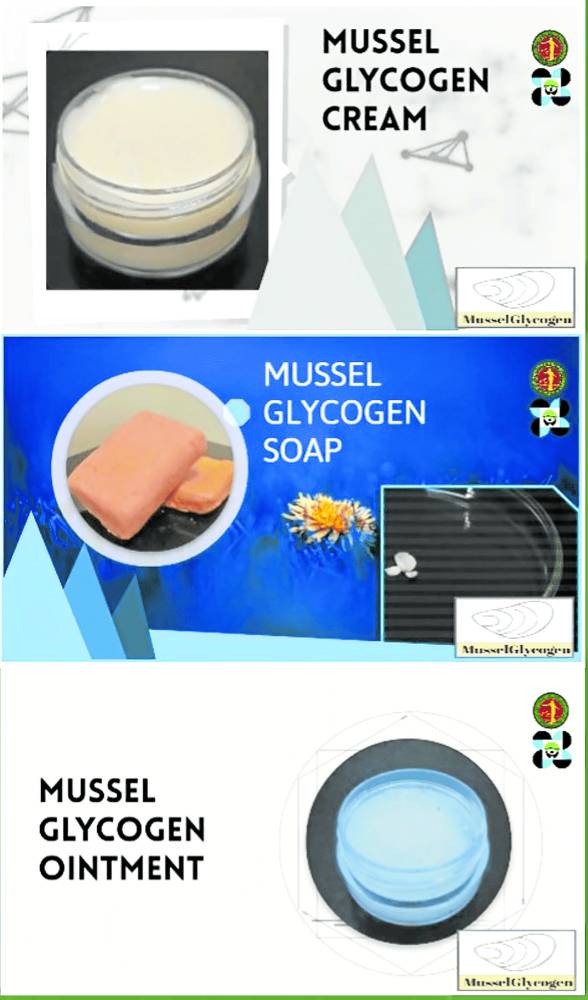
Tired of “tahong” for lunch or dinner?
Researchers from the University of the Philippines Visayas (UPV) and the Department of Science and Technology (DOST) will have you know that those mussels are good not only as food but also for skin care.
In a study titled “Extraction and Utilization of Mussel Glycogen,” the researchers from UPV and the DOST-Philippine Council for Agriculture, Aquatic and Natural Resources Research and Development (PCAARRD) used food-grade mussel glycogen extracts to develop cosmetic products like cream, ointment and soap.
“Green mussel (Perna viridis) is one of the emerging aquatic commodities that is poised to contribute to the economic output of the fisheries sector in the country,” the DOST-PCAARRD said in an article recently published on its website.
Two other types of the shellfish, black mussel (Mytella strigata) and the brown mussel (Modiolus philippinarum), were also included in the P10-million research project.
The team worked on formulating the three cosmetic products from food-grade glycogen extracts and laboratory-grade glycogen.
“The lab-grade glycogen was proven to be effective as a carrier in nucleic acid extraction when used in standard PCR (polymerase chain reaction) techniques,” the DOST-PCAARRD said.
Moisturizer
Project leader Leni Yap-Dejeto presented their research in a webinar last November, in which she explained that mussels showed potential as sources of compounds with bioactives (or nutrients that are antimicrobial, antioxidant and anti-inflammatory).
The glycogen in cosmetics acts as a moisturizer because it improves hydration and reduces redness and dryness without being oily, Yap-Dejeto said.
“Some studies show it stimulates collagen production and makes the skin elastic. Since it is easily absorbed by the skin, it acts like a delivery agent of other essential minerals and vitamins,” she said.
In terms of marketability, a study on the production, organization and management of the developed glycogen showed it was feasible to manufacture the products with a 193.95-percent internal rate of return (IRR) and 1.70 benefit-cost ratio (BCR), the DOST-PCAARRD said.
The IRR is the expected growth rate of an investment per year. The BCR shows the relationship between the relative cost against the benefits of the proposed project.
“A value greater than 1.0 will mean a positive net present value,” the DOST-PCAARRD said.
The constant occurrence of harmful algal blooms in Philippine waters, especially in the Samar region, has been displacing fishers and causing economic losses of up to P250 million, according to the agency.
It said this was what prompted researchers to explore the other uses of mussels apart from food.
READ: Love thy skin to avoid mercury-laced skin products – group